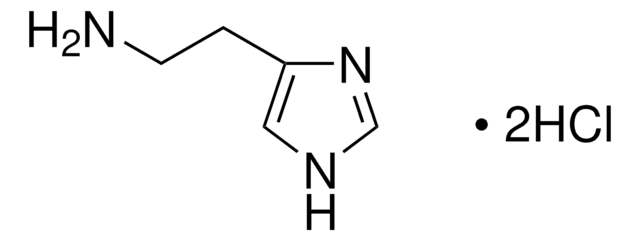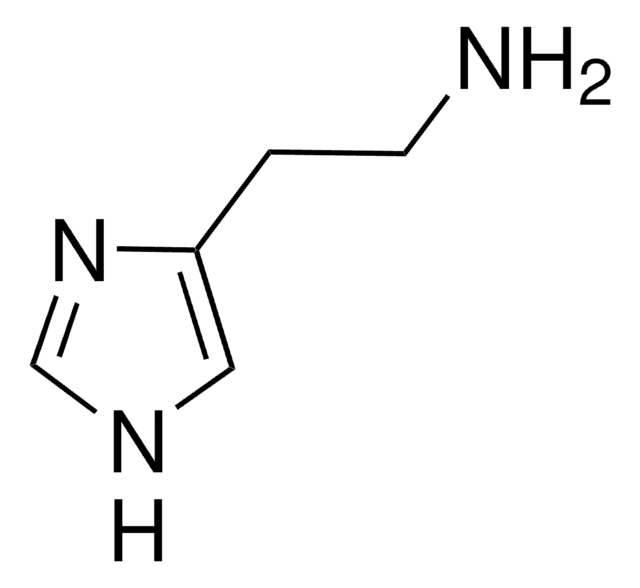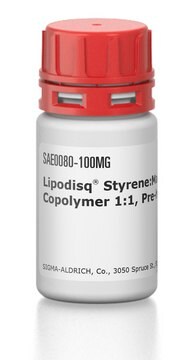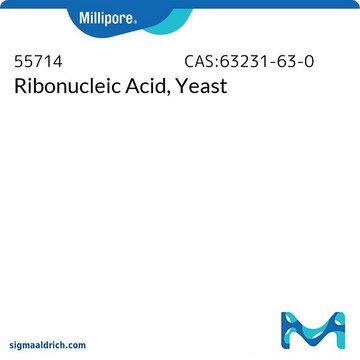推荐产品
化驗
≥95% (HPLC)
形狀
powder
顏色
white to light brown
溶解度
DMSO: 2 mg/mL, clear
儲存溫度
−20°C
InChI
1S/C27H32N4O4/c1-17-25-27(33)29-24(16-20-13-14-22(34-3)23(15-20)35-4)30-31(25)26(28-17)21(18(2)32)12-8-11-19-9-6-5-7-10-19/h5-7,9-10,13-15,18,21,32H,8,11-12,16H2,1-4H3,(H,29,30,33)/t18-,21+/m1/s1
InChI 密鑰
MYTWFJKBZGMYCS-NQIIRXRSSA-N
生化/生理作用
BAY 60-7550 is an orally active, potent and selective cGMP-dependent phosphodiesterase PDE2 (PDE2A) inhibitor (human/bovine PDE2 IC50 = 4.7/2.0 nM; bovine PDE1 IC50 = 108 nM, human PDE5/5A/10A/4B IC50 = 240/580/704/940/1830 nM, human PDE3B/7B/8A/9A/11A IC50 >4 μM) with little activity (IC50 >10 μM) toward acetylcholinesterase, mAO-A/B, adenosine deaminase, and many receptor subtypes tested. Bay 60-7550 effectively upregulates cGMP and cAMP level in cultured rat and murine neurons (1 nM-1 μM) exposed to guanylyl cyclase (GC) or adenylyl cyclase (AC) stimulator (1 μM Bay 41-8543 or 2 μM forskolin), respectively, as well as exhibits learning and memory-improving efficacy in rats (0.6-3 mg/kg p.o.) and mice (0.3-1 mg/kg p.o.) in vivo.
儲存類別代碼
11 - Combustible Solids
水污染物質分類(WGK)
WGK 3
閃點(°F)
Not applicable
閃點(°C)
Not applicable
Ligia Mendes Soares et al.
The European journal of neuroscience, 45(4), 510-520 (2016-11-05)
Cognitive and affective impairments are the most characterized consequences following cerebral ischemia. BAY 60-7550, a selective phosphodiesterase type 2 inhibitor (PDE2-I), presents memory-enhancing and anxiolytic-like properties. The behavioral effects of BAY 60-7550 have been associated with its ability to prevent
Stefania Monterisi et al.
eLife, 6 (2017-05-04)
cAMP/PKA signalling is compartmentalised with tight spatial and temporal control of signal propagation underpinning specificity of response. The cAMP-degrading enzymes, phosphodiesterases (PDEs), localise to specific subcellular domains within which they control local cAMP levels and are key regulators of signal
Remi Neviere et al.
International journal of molecular sciences, 17(12) (2016-12-16)
Adrenergic receptors couple to Gs-proteins leading to transmembrane adenylyl cyclase activation and cytosolic cyclic adenosine monophosphate (cAMP) production. Cyclic AMP is also produced in the mitochondrial matrix, where it regulates respiration through protein kinase A (PKA)-dependent phosphorylation of respiratory chain
Juen Zhang et al.
Cell, 166(3), 716-728 (2016-07-19)
Fear behaviors are regulated by adaptive mechanisms that dampen their expression in the absence of danger. By studying circuits and the molecular mechanisms underlying this adaptive response, we show that cholinergic neurons of the medial habenula reduce fear memory expression
Hege E Larsen et al.
The Journal of neuroscience : the official journal of the Society for Neuroscience, 36(33), 8562-8573 (2016-08-19)
Hypertension is associated with impaired nitric oxide (NO)-cyclic nucleotide (CN)-coupled intracellular calcium (Ca(2+)) homeostasis that enhances cardiac sympathetic neurotransmission. Because neuronal membrane Ca(2+) currents are reduced by NO-activated S-nitrosylation, we tested whether CNs affect membrane channel conductance directly in neurons
我们的科学家团队拥有各种研究领域经验,包括生命科学、材料科学、化学合成、色谱、分析及许多其他领域.
联系技术服务部门




